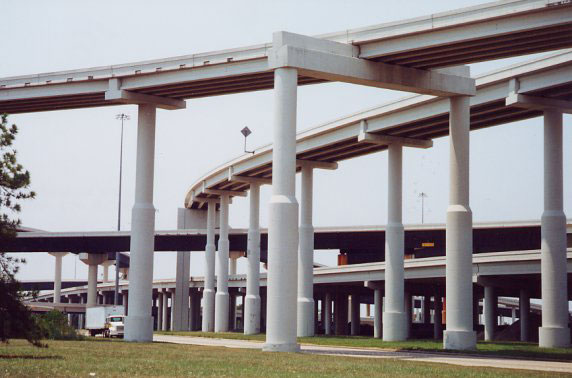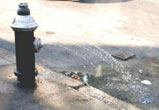

162 freeway design disaster
Among the planners, the historians, the students of public policy, they argue whether or not the wave of freeway building inaugurated by the Interstate Highway Act in the 50's was worthwhile and necessary. There's nothing wrong with good roads, though their introduction into city centers and established neighbourhoods played a leading role in the postwar Catastrophe of the cities. For the moment, we'll ask a different question. Freeways too are a part of urban design; were they built well? From the beginning, the process under which highways were designed and routes plotted demonstrated clearly enough the disregard decision makers had not only for the public, but for city planners. To the average man, planners existed to make pretty models of ideal cities. For something grown-up like highways they would never do. Already, as mandated by the federal government back in the 30's, states and counties possessed highway departments ready to take on the job. The new profession of the highway engineers was dedicated to a single goal, that of facilitating as much traffic as possible, and it had a scientistic solution for every road planning problem. Traffic counts and 'desire lines' (interview research to determine the origins and destinations of trips by area) were part of the impressively scientific apparatus by which new highway proposals were determined; in the end, these only confirmed what every city driver already knew. The intellectual basis of it all, laid out in such bibles of the profession as the 'Green Book' or the 'Highway Capacity Manual' of the Transportation Research Board makes for chilling reading—in one, a pedestrian is famously defined as a 'traffic flow interruption'. The Green Book was the work of the American Association of State Highway and Transportation Officials (AASHTO); it turned the process of design to one end only: increasing speeds. Roads had to get wider, so the trees, or anything else within 15 feet of the roadway, came down. If you had a historic old stone bridge, AASHTO wanted it demolished. Decorative street lamps? AASHTO insisted you replace them with ugly 'cobra lights'. And if you wanted any federal funding, you had to do whatever AASHTO said. Architect Victor Gruen understood the real nature of highway engineering, and the self-perpetuating careerism behind it. In The Heart of Our Cities (1964), he writes: 'This is not astonishing, if one considers that the traffickist is an expert and specialist who wishes to perpetuate the problem from which he is making a living. Toward the end of keeping his beloved specialty a continuous enterprise, he very carefully plans his efforts in such a manner that they create new and even more fascinating problems...The traffickists have hypnotized us into believing that traffic is an elemental act of God or nature, like an earthquake, a flood or a hurricane; something which only the expert, with his God-given power and insight, can dare to tangle with'. The important decisions to be made lay in the design of the road and settling the exact route. In design, highway engineers applied the same standards to city and country alike, and the standards were rock-bottom. Wherever the highway met the city, at exit and entrance ramps, neighborhoods were disfigured with shabby concrete walks, curbs and overpasses, chain-link fences, aluminum crash rails, minimal landscaping or none. City streets sprouted huge, green, garishly illuminated directional signs on 30-ft aluminum poles, designed to be seen a quarter-mile away. The Interstate planners gave a cold slap in the face to every town; nothing quite like them had happened since the invention of the el train, and those had only blighted a very few cities. The Interstates were everywhere, and everywhere the same. Through them the planners and the federal government sent city people a message: nothing really matters any more, and the neighborhoods the highways ripped through were fit only for leaving. As for route planning, the engineers' sole consideration was keeping down the cost of land acquisition. So highways continued to be built through the public parks and any other vulnerable space. Often this was old industrial areas or docks; in this way Philadelphia, Pittsburgh, Cincinnati, Louisville and many other cities lost access to their waterfronts, and valuable land that could have been redeveloped for apartments or parks became a wasteland. Louisiana highwaymen wanted to run one right next to the Vieux Carré levee in New Orleans, destroying the French Market in the process, before one of the first successful anti-highway campaigns stopped them. One basic tenet of the engineers' theory was the downtown loop, or 'inner belt', intended to distribute traffic around the center; these were usually built very close to the business core, devastating the fringes of downtown and cutting it off forever from its surrounding neighborhoods. The theory was just as rough on residential areas. Highway planners did not concern themselves with the fabric of the city. The only question to them was the most direct and cost-efficient routes; if the roads cut coherent neighborhoods into pieces, and plowed diagonally through the middle of commercial strips, that was not their problem; for the engineers, the city was a blank slate, and they had the power to carve it up any way they wished. If local leaders seldom spoke out against engineering barbarism, they would at times help insert some ulterior motives of their own into the planning process. Highways everywhere were pressed into service in the racial frontier wars, either consciously constructed as boundaries, or run through the heart of the most densely populated black areas in hopes of wiping them out completely for future redevelopment. Chicago's Dan Ryan Expresssway found a course that artfully separated the South Side 'Black Belt' from white neighborhoods such as Bridgeport (just coincidentally the home of Mayor Daley and other machine leaders). In Detroit, the Chrysler Freeway was plotted to run right down the black business area along Hastings Street, destroying scores of black-owned businesses and neighborhood institutions. Blacks could run but they couldn't hide; when the black middle class settled a new area around 12th Street on the West Side, the Lodge, Jefferies and Edsel Ford Freeways appeared, chopping the neighborhood into shreds.. Big interchanges were carefully planned to wipe out entire neighborhoods if they stood close to land that was deemed potentially valuable. Just blocks from the state capitol in Atlanta stood Summerhill, the 'Mecca of Atlanta', a thriving, mostly black neighborhood that was home to some of the city's leading citizens; of 12,500 residents, 10,000 were forced out. |
|

|